
Developing a new degree program
Explore the stages involved in developing a new degree program at –°”≈∂à ”∆µ, including a statement of interest, demand research, design and consultation, approvals and stakeholder notifications.
What you need to know
Colleges of Applied Arts and Technology (CAATs) and Institutes of Technology & Advanced Learning (ITALs) were first enabled to apply for consent to deliver bachelor‚Äôs degrees in applied areas of study by the¬Ýin the year 2000.
Bachelor‚Äôs degrees delivered by colleges in Ontario are assessed against the standards for¬Ý¬Ýof the¬Ý. These standards are equivalent to those of the corresponding¬ÝÃ˝(±´±´∂Ÿ≥¢∑°≤ı).
For more detail regarding the quality and history of bachelor‚Äôs degrees granted by colleges in Ontario, see this¬Ý by the¬Ý.
A new program is developed to meet student, community, social and labour needs, and to complement the strategic direction of the college as outlined in the Strategic Plan, Strategic Mandate Agreement, Academic Plan, Strategic Enrolment Management Plan, and government initiatives.
Degree programs must meet the curriculum standards and processes of –°”≈∂à ”∆µ, PEQAB and the Ministry of Training, Colleges and Universities (MTCU). As such, there are a number of steps involved in creating a new program from idea to launch.
1. Statement of interest and program demand research
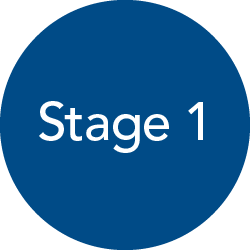
A new program idea may be approved for development after academic areas make a strong case for its potential alignment with the college’s strategic priorities, and contribution to the current program mix.
This is dependent upon extensive analysis and documentation, which is presented at various stages, and housed within the Curriculum Information Management (CIM) system.
The first step in new program development is to complete the¬ÝStatement of Interest¬Ý(SOI) within CIM and submit it through workflow to the vice president academic (VPA). This provides an opportunity for the academic area to demonstrate the rationale for adding a new program to the current college mix. The academic area provides the following information:
- Program specifications
- Outline of the strategic benefits of the program
- Explanation of program fit with current mix
- Analysis of the institutional capacity for delivering a new program
- Assessment of potential risks involved
If the above analysis indicates potential for success, the VPA approves the academic area to engage in further research to help determine if the new program can be launched and sustained.
In conjunction with Institutional Research, the academic area conducts the¬ÝProgram Demand Research Analysis¬Ý(Section 1.2 of the¬ÝNew Program Rationale). This should include the following:
- Student and labour market demand analysis
- Work-integrated learning potential
- Transfer and articulation potential
- Partnership potential
- Profile of key competitors and program differentiation
- Note: Program differentiation for degrees involves comparing the similarities and differences of the existing/proposed program with other programs in Ontario (at colleges and universities); if the proposed program is similar to other programs, explain what value it adds/would add to the system
With the addition of the research, the SOI is presented at Academic Leadership Team (ALT), where the advantages and disadvantages of adding the new program at the college are discussed. Based on the discussion, ALT determines final approval for development and, if granted, the program moves to the next stage: Program design and consultation.
2. Program design and consultation
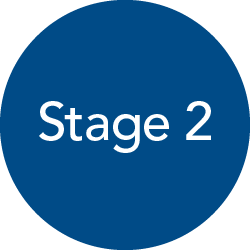
The academic area works toward ensuring that the college is able to deliver the quality of education necessary for the new program‚Äôs success. The academic area is responsible for designing the new program curriculum and finalizing the¬ÝProgram Costing.
The design of a program depends upon a team of academic experts working collaboratively. This team includes the dean/associate dean, lead faculty (often the program co-ordinator), faculty experts in the area, and a member of the Office of Academic Quality (OAQ).
Internal and External Stakeholders
A steering committee of industry advisors is also an essential component of new program development. Members provide subject matter expertise and knowledge of the employment landscape and help to ensure the new program is current and relevant to future employment and academic pathways. Members of this committee generally become members of the Program Advisory Committee (PAC) once the program is launched. Other external stakeholders include regulatory bodies who should be consulted regarding external requirements, and industry partners.
Internally, the Office of the Registrar can confirm admission requirements and help resolve any issues around how the structure of a program may impact funding, student fees, academic space and scheduling. Other academic areas can collaborate around shared courses or potential pathways.¬ÝInternal stakeholders should be consulted on an as needed basis and can include the following:
- Graduates and students
- Credit for Prior Learning
- Physical Resources
- Student Services (e.g., Library, Co-op)
- Information Technology
For a list of complete stakeholders, refer to the¬ÝÃ˝±Ë∞˘¥«≥¶±≤ı≤ı.
A new degree program is developed to meet student, community and employment needs, and to complement the strategic direction of the college. A new degree program must meet¬Ý guidelines through the¬Ý benchmarks and –°”≈∂à ”∆µ‚Äôs curriculum standards.
MTCU limits both the number of degrees that can be conferred by a college, and the type of degrees that can be granted by colleges. This doesn‚Äôt include degrees that are conferred by our university partners. CAATs are currently permitted to offer one type of degree: an honours bachelor‚Äôs degree in an applied area of study. ∞’≥Û±Ã˝¬Ýdescribes this credential.
Degree programs in CAATs must meet the MTCU Qualification Standards for a Bachelor‚Äôs Degrees (Honours) in an applied area of study, as defined in the¬Ý, and all of PEQAB‚Äôs Degree Program Quality Review Standards and Benchmarks, as outlined in the most recent¬Ý.
Degree programs contain three basic elements described below: Core courses, non-core or breadth courses, and work-integrated learning.
Core courses
Core courses are defined as those courses with subject matter that is within the main discipline of study. In general, this means that they are in the areas described in the nomenclature of the degree. For example, in Bachelor of Business Administration – Automotive Management, they are courses that are in business, or specifically in the automotive area. Core courses can be either mandatory (specific courses that must be taken to graduate) or elective (courses can be chosen from a list or category of core courses).
For example, a selection of Special Topics courses in the core area may offer students elective choices and allow the program the flexibility for currency. In degree programs, there must be a balance of theory and practice in the core area. Program and course learning outcomes should reflect this balance. In addition, “increasingly complex theory” must be supported by the sequencing of course learning outcomes and by the prerequisite structure. No more than 80 per cent of the courses in a degree program can be in the core area of study.
Non-core/breadth courses
By definition, breadth, or non-core courses, are those courses that are taken in areas outside the main discipline of the degree. In general, this means that they are outside the areas described in the nomenclature of the degree. For example, in a Bachelor of Business Administration ‚Äì Automotive Management, they are courses that are neither in business, nor specifically in the automotive area. At least 20 per cent of course hours must be non-core courses. Some breadth courses are mandatory, but some breadth courses must be electives.¬Ý–°”≈∂à ”∆µ delivers breadth programming according to our ministry-approved Breadth Plan.¬ÝThis plan requires students to take courses from particular categories and at more than an introductory level. At –°”≈∂à ”∆µ,¬ÝMultidisciplinary Research is a mandatory non-core/breadth course for all of our degree programs.
Work-integrated learning
Whether the work-integrated learning experience is a paid co-op, an internship or other work experience, the following PEQAB Benchmark must be met.
Any work-integrated learning experience:
- a) is appropriate to the field of the program
- b) has articulated, appropriate learning outcomes
- c) is supervised by both a college representative with appropriate academic credentials and an employer/staff member who collaborate to evaluate the student performance
- d)¬Ýprovides opportunities and structure for student reflection on program learning outcomes in relationship to work-integrated learning experience(s)
- e) amounts to no less than 14 weeks of full-time equivalent work (420 hours), either in one block, or in multiple cumulative blocks appropriate to achieving the learning outcomes.
For more information,¬ÝÃ˝(±Ë.28).
∞’≥Û±Ã˝Program Outline¬Ýincludes essential information about an academic program, including program learning outcomes, courses, admission requirements, graduation requirements, student progression and more. This document serves the needs of students, faculty, administrators, and external approval bodies. In order for a new program to launch at the college, the¬ÝProgram Outline¬Ýmust be approved both internally and externally.
All course outlines for a new program need to be drafted and approved by the dean or associate dean within the CIM system prior to program approval at Academic Council (AC).¬ÝThe course proposal form in CIM provides instruction regarding all of the essential components via help bubbles: title, hours, semester offered, delivery method, requisites and equivalents, the course description, course learning outcomes, course content, and course evaluation.
When developing courses for degree programs, keep in mind such things as:
- purpose and goals of the course within the context of the program
- sequence of learning
- assessment
- instructional methods and resources
- continuous quality assessment and improvement plans
- accessibility and inclusivity (e.g., that students with disabilities and from all backgrounds can participate with an equal chance of success)
- characteristics of degree-level learning such as increasingly complex theory
- well-articulated appropriate learning outcomes for work-integrated learning
- scaffolded requirements for research and academic writing
- recommended reading in the upper years of the program that includes primary source scholarly journal articles
Course outlines are finalized in the system once the program outline is approved at AC during stage three: Internal approval.
There are numerous ways to map the curriculum of a program. Maps are useful in creating a picture of your program from a particular angle, and the type of map you use is dependent upon your goal.¬ÝElements of mapping might include program and course learning outcomes, assessment, and accreditation requirements, to name a few.
Mapping requirements for new degree programs includes detailed curriculum mapping.
Detailed curriculum mapping
∞’≥Û±Ã˝Detailed Curriculum Map¬Ýenables faculty to map every Course Learning Outcome (CLO) to each Program Learning Outcome (PLO) and Degree Level Standard, as well as to institutional priorities such as entrepreneurship and Indigenization. In a grid layout, faculty also identify when each CLO is Introduced for the first time (I), Reinforced (R), and/or Assessed (A) in each course.
Curriculum mapping helps faculty to conceptualize the big picture in the sequence of course learning concepts and see how the pieces of the curriculum fit together. It helps faculty identify gaps in the intended learning and provides opportunity to re-think course sequencing. Course mapping also helps the college illustrate its adherence to PEQAB Standards and Benchmarks.
3. Internal approval
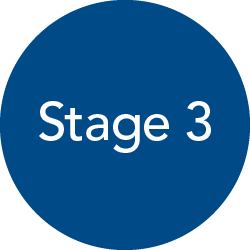
Once the¬Ýprogram curriculum is¬Ýcompleted, it must be approved at¬ÝAC. The dean/associate dean submits¬Ýthe curriculum via the CIM system¬Ýto the OAQ at least¬Ýtwo weeks¬Ýin advance of the scheduled AC meeting.
This gives the OAQ time to review the documents to ensure they meet ministry and curriculum system requirements. If anything needs clarification, the¬Ýcurriculum may be sent back to the academic area for revision.¬ÝIt¬Ýcan then be resubmitted and will be sent via the CIM workflow to the members of AC no later than one week prior to the meeting.
The final internal approval process is as follows:
- AC approves proposed program curriculum ‚Äì¬Ýmust occur by December
- Any outstanding information regarding the new program proposal¬Ýis completed (including the Statement of Interest, final, updated research as required, approved program curriculum, final¬ÝProgram Costing)
- ALT approves the¬Ýnew program proposal
- Vice President, Corporate Services and Innovation approves final¬ÝProgram Costing
- Senior Leadership Team (SLT) approves the new program proposal
- Board of Governors approves the final proposal ‚Äì¬Ýmust occur by February at the latest
This series of approvals can take one month or more, due to the schedule of meeting dates. Programs must be approved by AC byÃ˝∂Ÿ±≥¶±≥æ≤˙±∞˘Ã˝at the latest.
Once the Board of Governors has approved the program, it is ready for external approval. These internal approval documents, and more complete curriculum and course development documents, are included in the application to the MTCU and the PEQAB submission, which are described in more detail in the next section.
4. External approval
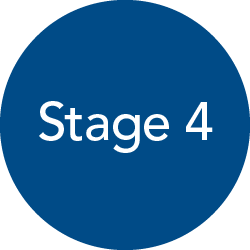
In addition to the information required for internal approval, a submission of application to PEQAB requires that the program demonstrates that benchmarks are met in other areas. The PEQAB application is updated annually. Please for the most recent Manual for Ontario Colleges.
OAQ works with the program area and facilitates the production of evidence required to document how each of the Standards and Benchmarks are met. In addition to the information provided for internal approval, the required documents include:
- PAC minutes that contain the motion that the program is supported
- Curriculum Vitae for every faculty member that may be teaching in the program
- gap analyses for degree completion arrangements
- library resources that support the program
- potential work-integrated learning partners
Full details related to these requirements can be found in the¬Ý. Support for understanding and demonstrating these requirements is available from the OAQ.
At this point during the process of applying for consent to deliver a new degree, the most common question is, ‚ÄúWhat happens next?‚Äù The document¬Ý¬Ýprovides a summary of the usual process with some notes to help define key aspects of the process. Here are the highlights:
- The completed Application for Consent is submitted to the ministry by the OAQ with a cheque for $5,000.
- MTCU refers the application to PEQAB, and PEQAB appoints an expert panel to review the application.
- The associate dean, dean, and OAQ work with the panel to set a date and an agenda for the site visit. Preparation for the site visit can begin immediately after the application is submitted. In their 2016 Handbook for Ontario Colleges (Appendix 8.1) PEQAB introduced a¬ÝSite Visit: Suggested Agenda Template, which can be used as a guideline for planning the site visit.
- Members of the expert panel develop a report that assesses the application against the board’s standards and benchmarks and makes a recommendation about whether the proposed program meets PEQAB standards.
- The applicant is given an opportunity to respond to the panel’s report.
- The PEQAB Board reviews the application, the panel’s report and the college’s response, then makes a recommendation to the ministry to grant or deny consent for the degree.
- PEQAB sends a copy of the recommendation to the college prior to sending it to the ministry.
- The minister considers PEQAB’s recommendation and communicates the decision about consent, the duration of consent, and any conditions of consent, to the president of the college.
If the expert panel report appears to be positive, a¬ÝFunding Approval Request¬Ýform for a new degree program can be sent to the ministry without waiting for official consent. This allows the potential for the funding application to be assessed concurrently with the minister‚Äôs decision regarding consent and shortens the length of time to obtain funding approval. The information required for funding approval is completed in the CIM system at the end of the new program proposal form.
5. Stakeholder notification
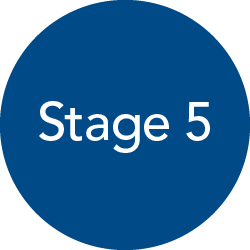
Once the internal and external approvals have been obtained, it’s time to begin notifying stakeholders in a timely manner.
Accurate, consistent and timely information is required well in advance of a program launch in order to attract students to the college through high school visits, college open houses, employers, the college viewbook, –°”≈∂à ”∆µ‚Äôs website and promotion on the Ontario College Application Service (OCAS) website. The information is also necessary for the college to:
- establish tuition and program ancillary fees
- register students
- schedule classes and assign space
- enable students to plan their educational paths to graduation
- allow students to select their courses by semester
- determine graduation eligibility
For degree programs, it‚Äôs also important to consider and develop pathways from as many diploma programs as possible, whether they are high-, medium- or low-affinity paths. Determining transfer between credentials can be a complex task and gap analysis can be daunting. Contact OAQ for guidance and to ensure that documentation required to demonstrate the process fulfils both PEQAB and –°”≈∂à ”∆µ standards. Students graduating from diploma programs are an important market for degree programs.
Upon receipt of ministry funding approval, the following occurs:
- Immediately:¬ÝOAQ notifies the RO;¬Ýthe dean/associate dean, program development team, program assistant and academic officer of the relevant academic area; Finance and Corporate Services; Marketing, Communications and Recruitment; and Co-op Education and Career Success (if relevant) via the CIM system.
- June: OAQ submits the program information to Marketing, Communications and Recruitment for inclusion in the college viewbook.
- September:¬ÝRO provides the information to the OCAS for promotion on its website:¬Ý.
- ∞ø≤‘≤µ¥«æ±≤‘≤µ:Ã˝Program teams prepare for program delivery, including the development of assessment, instruction and course syllabi. Please contact the¬ÝCentre for Teaching and Learning (CTL)¬Ýfor support.
When the target of the program is direct-entry students, a new program loaded into OCAS in September will launch¬ÝSeptember of the following year¬Ý(e.g., a new program loaded into¬ÝOCAS in September of 2019 will have its first intake, September 2020).
Questions?
Contact the OAQ team
We can provide a number of resources with regard to curriculum development and design, and work with program teams on curriculum development.
We’re here to assist with answers to questions about the Curriculum Information Management system (CIM), approvals, deadlines and more.
Send us an email:
academicquality@georgiancollege.ca




